A frequent sight at popular Shinto Shrines is a wedding procession and the more we saw of them the more fascinated I became with the customs and the Japanese wedding kimono worn by the brides. I needed to know more about these elaborate outfits and formal ceremonies.
Something you will regularly see as you travel around Japan in the shines and in public places are Japanese Shinto weddings, or post-wedding photography. On the first day of our first trip to Japan, we were at Meiji Shrine in Tokyo and saw three wedding parties move through literally one after the other.
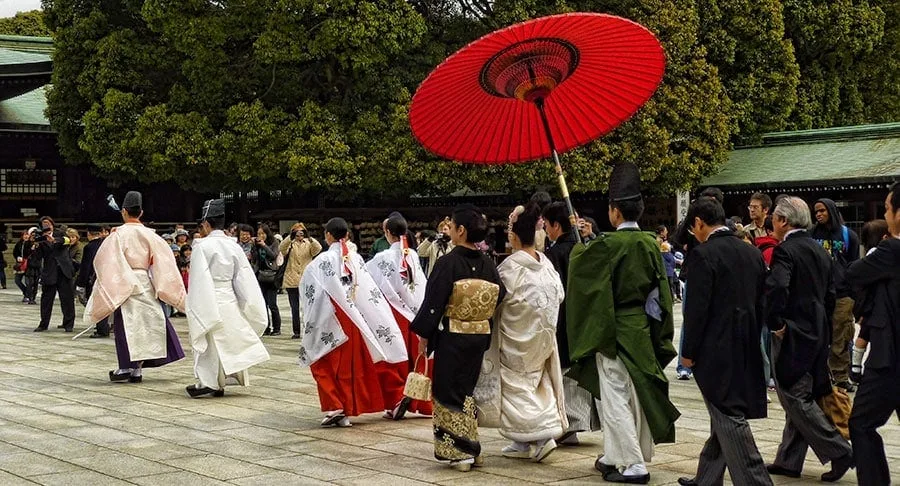
Of course, not all weddings in Japan are in the Shinto tradition, western-style weddings have become increasingly popular in modern Japan or having no ceremony at all.
The Japanese couple will be already be married before the ceremony takes place, no ceremony is required for it to be official. The legal aspects of the marriage are all carried out at a local government office before any ceremony takes place. Those official documents then need to be presented in order to be married a the Shrine.
The Shinto ceremony itself is beautiful and quite complex but this post is specifically about the elaborate wedding outfits. The ceremony usually seems to take place at the large popular shrines like Meiji Shrine in Tokyo, Itsukushima on Miyajima Island and Tsurugaoka Hachimangū Shrine in Kamakura. It also seems to be a far more popular option amongst more mature brides than the young ones.
Table of Contents
The Shiromuku
The typical Shinto brides outfit is called the Shiromuku and consists of 6 main parts. These are the white kimono, the over robe called the uchikake, a ceremonial fan, a large white hood called the wataboshi, the tsunokakushi which is the ceremonial headband and an elaborate heavily ornamented hairstyle that is often a wig.
The outfit combines styles of two very different eras. The kimono is fashioned on a samurai-class garment of the Edo period while the outer robe takes its design from medieval Japan.
A full ensemble, even to hire would cost around $10,000+, not an insignificant expense for the brides family.
The Iro-Uchikake
Not all Shinto brides choose to be married in an all-white outfit. When worn with a coloured outer robe it’s called the iro-uchikake (literally coloured robe) and the rest of the pieces remain unchanged. The colours chosen are generally scarlet, orange or gold. The choice is the brides, while white in the Shinto religion signifies both purity and death it has only come to be associated with weddings over the past century. Not wearing white doesn’t have the same significance as it might for a western bride.
The Wataboshi
The all-white hood called the wataboshi is the Shinto equivalent of the western bridal veil. The bride wears it before and during the ceremony and is a symbol of innocence and purity.
The Tsunokakushi
The headband is perhaps the most unusual piece for a non-Japanese observer. It is the concealer of horns, a woman is believed to have horns of jealousy which must remain hidden from the prospective husband until after the wedding.
The Hairstyle
The hairstyle as mentioned earlier is usually a wig. It originates from the Edo period (the early 17th to mid 19th centuries) it’s heavily oiled and twisted in a very specific way. The hair is then decorated with wooden lacquered combs and delicate kanzashi ornaments.
Let me know below if you’ve seen a Shinto wedding or photo session while in Japan? Which style do you prefer, the white or coloured outer robes?
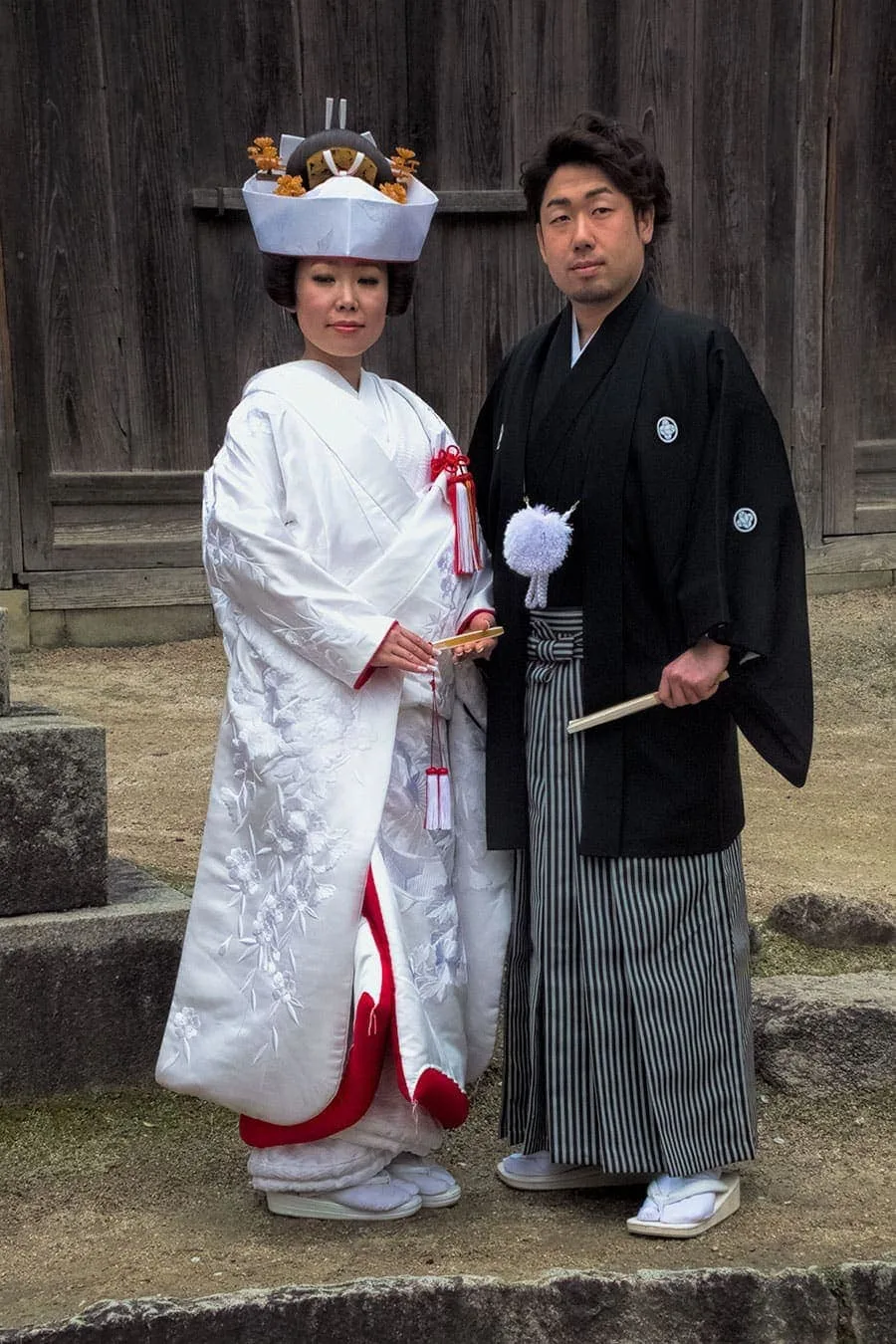
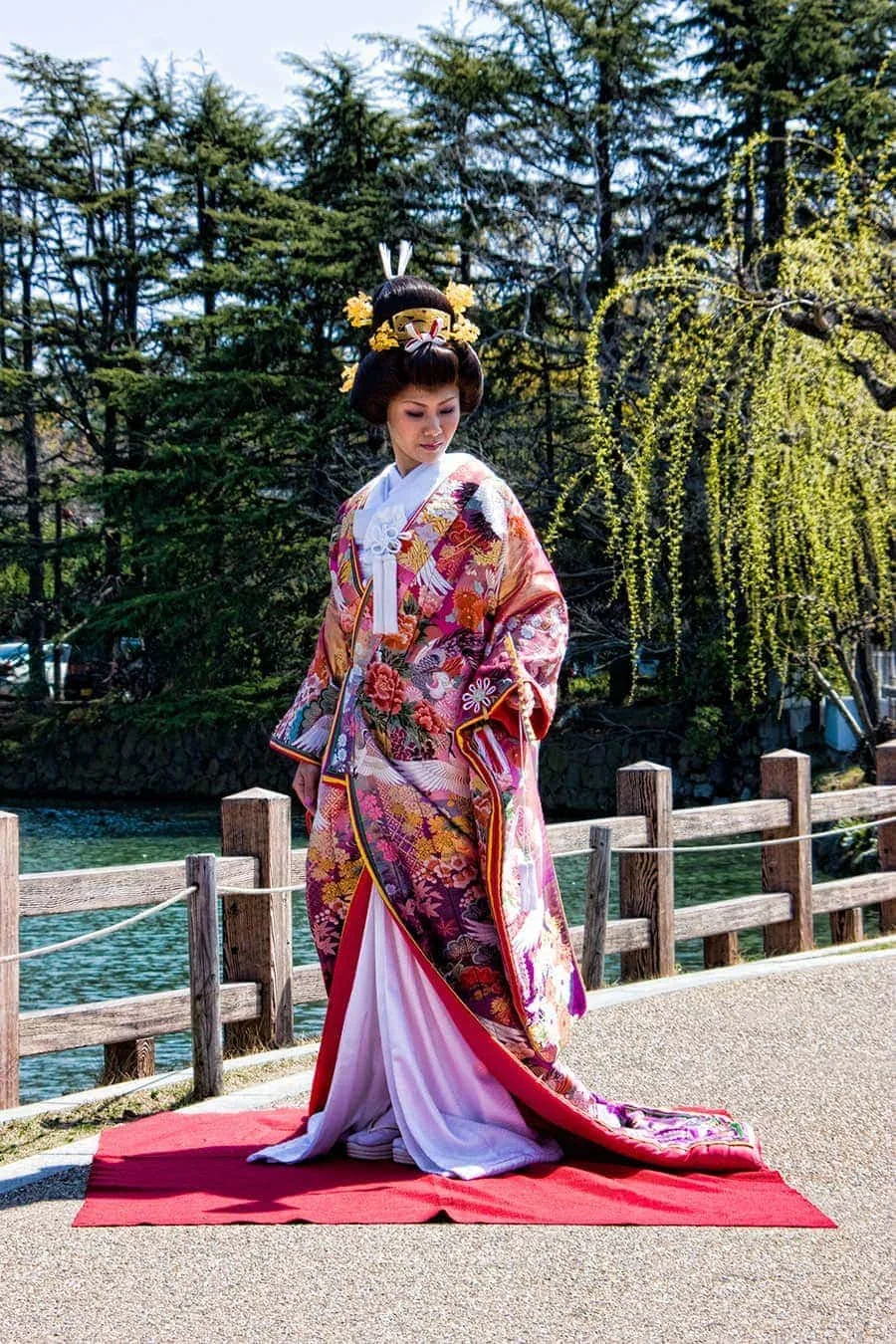
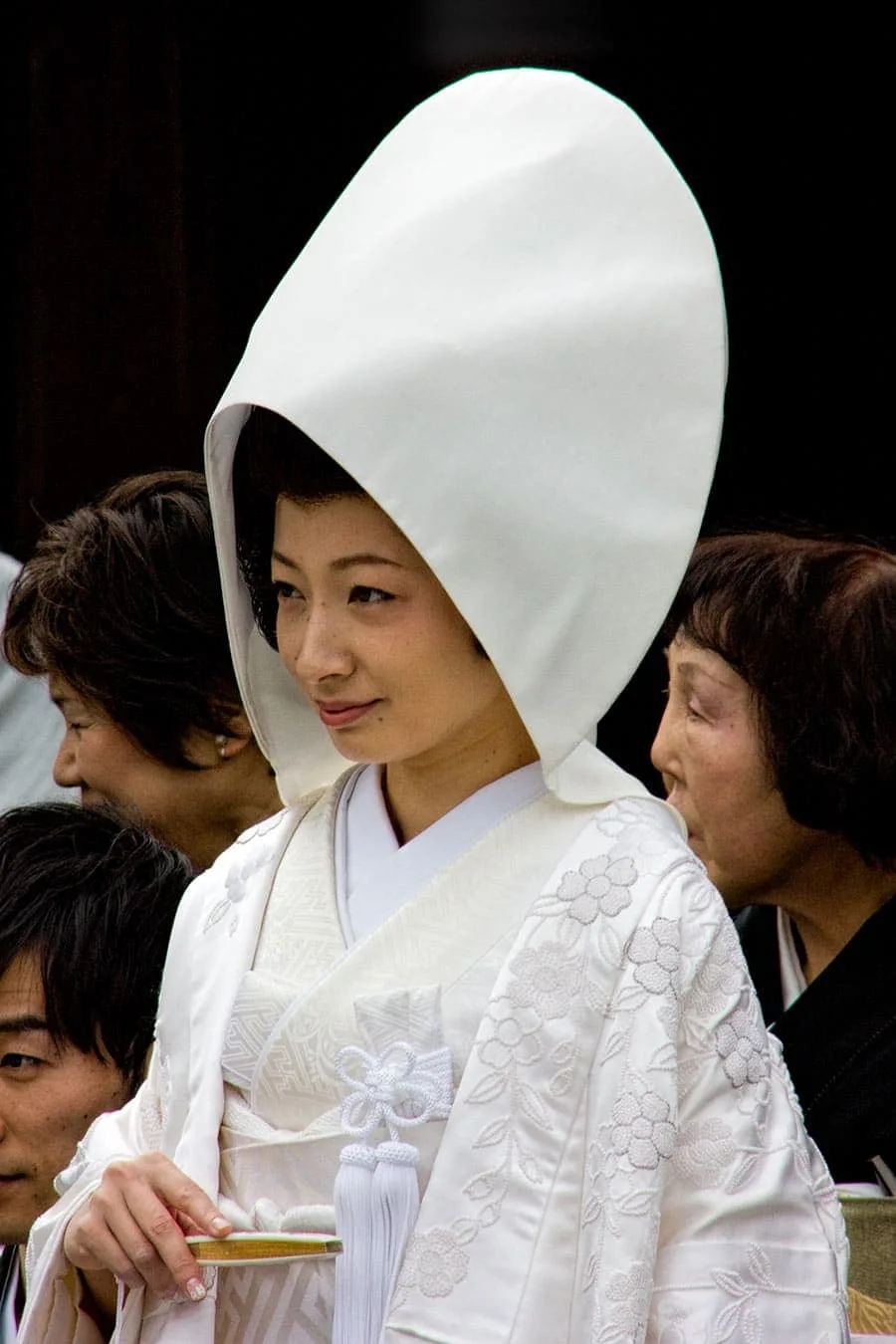
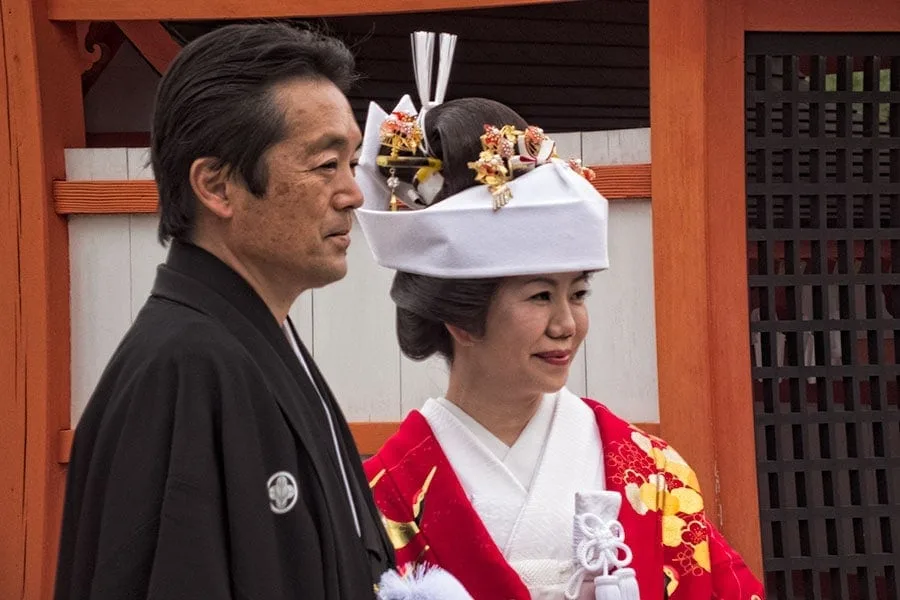

Leah@KidBucketList
Saturday 17th of January 2015
Oh my gosh! Japan has been calling me for a long time and this just makes the call stronger. The wedding dresses you've shown are exquisite. Absolutely delightful! I haven't seen any of these before but when I finally get to Japan I will have my eye out for weddings! Due to the layers, do the Japanese tend to marry in the cooler months? #teamwanderlust
twoaussietravellers@yahoo.com
Saturday 17th of January 2015
Hi Leah, they are so beautiful aren't they. Japanese seasons are culturally very important, and very pretty in photos so spring and autumn are really popular for weddings. I avoid Japan in the heat of summer but I'm told the brides manage through the heat and humidity in the full wedding kimono with more serenity and less glow than I would muster I'm sure. Thanks for visiting the blog.
Mary {The World Is A Book}
Monday 12th of January 2015
Such beautiful photos! We witnessed a few wedding parties at the Meiji Shrine too a few years ago. It was so fascinating to see the photo sessions and processions. We were there during the summer so it was even more admirable to watch them not break a sweat under all that gear. Thanks for all this useful and interesting information. I never got around to researching about the costumes.
twoaussietravellers@yahoo.com
Monday 12th of January 2015
Thanks Mary. At some shrines like Hachiman-gu in Kamakura the wedding ceremony itself takes place on the main stage out the front of the shrine so you can see the whole thing. I'm impressed at them wearing all that in the summer heat, we've seen them mostly in Spring and I must admit I did wonder if the weight of the garments might be part of the reason for the popularity of marrying during sakura
Robyna
Monday 12th of January 2015
So beautiful! I love the white. I haven't been to a Japenese wedding but I have been to an Indian wedding, also lots of different outfits and layers to the celebration.
Annemarie
Sunday 11th of January 2015
So cool! I hope I do see a wedding over in Japan. I will try to keep your insights in mind and spot the different layers. I like the coloured outfit best. Did you know that the traditional white European wedding was actually triggered by Queen Victoria's wedding dress? Before that brides wore all kinds of colours.
twoaussietravellers@yahoo.com
Sunday 11th of January 2015
Thanks Annemarie, I had no idea that our white western gowns started with Queen Victoria, interesting.
Aleney @ BoyEatsWorld
Saturday 10th of January 2015
Stunning! That hair is amazing and the gowns are really something special. I love reading about Japanese culture but hadn't realised there were so many different styles of traditional wedding dress. The coloured one gets my vote :-) #teamwanderlust